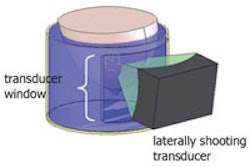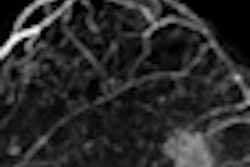With the help of functional MRI (fMRI), researchers have discovered which regions of nicotine-dependent smokers' brains are activated by cigarette-related cues, according to two reports posted online December 30 in the Archives of General Psychiatry.
In addition, the studies have found that the smoking cessation medications bupropion and varenicline may be associated with changes in the way the brain reacts to smoking cues, making it easier for patients to resist cravings.
At the University of California, Los Angeles (UCLA), participants underwent fMRI scans within one week of joining the study and again at the end of the eight-week treatment period. During the scans, the subjects were shown 45-second videos that contained either smoking cues of actors and actresses smoking in a variety of settings or neutral cues, with similar settings but no smoking behaviors. Participants then indicated how strongly they craved cigarettes.
Patients who were treated with bupropion reported less craving in response to smoking cues than did patients who received placebo. Those taking bupropion also showed reduced activation in areas of the brain known to be associated with cravings, including limbic and prefrontal regions.
Among all participants, regardless of treatment, reports of cravings aligned with fMRI images. In other words, subjects who showed reduced activation in craving-related areas also reported feeling fewer cravings.
In the other study, conducted at the University of Pennsylvania in Philadelphia, researchers evaluated brain responses to varenicline, a first-line smoking cessation medication. Perfusion fMRI was used to measure longitudinal changes induced by the medication during smoking cue exposure and also in the brain in the resting condition.
Twenty-two smokers received either varenicline or placebo, and the brains of smokers were imaged before and after the medication regimen, while at rest and while viewing 10-minute video clips that contained either smoking cues or nonsmoking cues. Study participants also reported their cravings.
In fMRI scans performed before the medication regimen, smoking cues activated brain areas involved in drug motivation, such as the ventral striatum and medial orbitofrontal cortex, and also elicited reports of craving. After the medication regimen, similar patterns of activity persisted in patients who had taken placebo, whereas those who received varenicline showed a reduction in brain activity in those regions and in self-reported craving.
In participants who took varenicline, brain activity in the resting condition was selectivity increased in a region known as the lateral orbitofrontal cortex, which is implicated in inhibiting behavior that predicts reward (such as smoking cues). Of note, increased activation in this area predicted the blunted response in the medial orbitofrontal cortex and ventral striatum, explicitly demonstrating the mechanism underlying varenicline's ability to reduce the effects of smoking cues on both the brain and craving.
By Wayne Forrest
AuntMinnie.com staff writer
January 4, 2011
Related Reading
Functional MRI may track aberrant pediatric brain development, September 13, 2010
Study offers strategy for managing incidental findings on fMRI, July 6, 2010
Resting fMRI exam may predict stroke and brain injury outcomes, March 30, 2010
fMRI helps find schizophrenia symptoms, January 20, 2009
Functional MRI scans clues to best multitasking times, September 12, 2008
Copyright © 2011 AuntMinnie.com



















